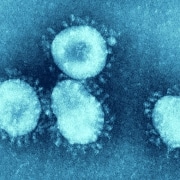Coronavirus Mortality Rate Upped to 3.4%; Increasing Need for Testing
With the world’s major health organization upping the mortality rate to 3.4%, there is increased need for a working rapid test for COVID-19 to be able to properly isolate patients and protect providers.
The World Health Organization (WHO) has raised its estimate of the mortality rate of patients infected with the novel coronavirus to 3.4% globally, up from a 2.3% death rate in previous estimates. In a press briefing in Geneva, WHO Director-General Dr. Tedros Adhanom Ghebreyesus told reporters of the higher mortality estimate based on reports coming in from around the world, according to an article on CNBC.com.
The novel coronavirus SARS-CoV-2 causes the disease COVID-19. As of March 4, 92,943 cases of COVID-19 had been reported globally, with 3,160 deaths, Ghebreyesus noted during a mission briefing on March 4. The WHO has shipped nearly half a million sets of personal protective equipment to 27 countries and has sent “hundreds of thousands of lab tests” to countries in call regions, he said.
The higher mortality estimate for COVID-19 represents a significant escalation of the health risk posed in the event that coronavirus infections spread significantly. Concern about the coronavirus outbreak has already resulted in the cancellation or postponement of public events scheduled for March, such as the European Congress of Radiology in Vienna and the Acute Cardiovascular Care conference in Athens.
By point of comparison, the mortality rate from the seasonal influenza virus is around 0.1% in the U.S., according to published sources.
In the press briefing, WHO officials said that much of the difficulty in estimating the health impact of the novel coronavirus comes from the fact that the virus behaves differently from the flu virus, and the mechanisms by which it is transmitted aren’t fully understood, according to the CNBC report.
On the positive side, they said that in countries with “strong measures” to contain outbreaks, virus transmission can be suppressed.
Please sign up to our sister publication, www.labpulse.com for more information on this disease.
Adding a fifth “vital sign” — that is, travel history — to patient intake evaluations could go a long way toward identifying those at risk of the COVID-19 coronavirus disease and potentially slow its spread, according to a commentary published March 2 in the Annals of Internal Medicine.
A typical patient evaluation includes an assessment of temperature, heart rate, respiratory rate, and blood pressure. But in the context of COVID-19, adding travel history is key, wrote a research pair led by Dr. Trish Perl, chief of the division of infectious diseases at the University of Texas Southwestern Medical Center.
“A simple, targeted travel history can help us put symptoms of infection in context and trigger more detailed history, appropriate testing, and rapid implementation of protective measures,” explained Perl and colleague Dr. Connie Price, a professor of medicine/infectious disease at the University of Colorado.
The clinical community’s experience in dealing with severe acute respiratory syndrome (SARS), Middle East respiratory syndrome (MERS), and Ebola point to how critical it can be to identify disease through travel history, Perl and Price noted. They cited a missed opportunity in a 2014 Ebola case.
“In Dallas, a patient presented to an emergency department in 2014 after returning from Liberia with low grade fever, abdominal pain, dizziness, nausea and headache,” the authors wrote. “The patient had Ebola. Because clinicians did not obtain the one potentially distinguishing clinical clue — a travel history — the well-being of both the patient and caregivers were compromised.”
In the face of the COVID-19 epidemic, health organizations and individual countries have attempted to control the spread of the virus via strategies such as travel and public gathering restrictions, school closures, and city quarantines, Perl and Price noted. But these measures may not be enough.
“Investigators estimated that there were almost 59,000 cases in Wuhan and 3,500 in other regions in China before the travel ban was implemented. … A recent report suggests that, because of the incubation period for COVID-19, the spectrum of symptoms, and the time during the incubation period persons may fly, 46% would be missed by airport-based screening,” they wrote. “Available data specific to COVID-19 suggest that screening and restricting travelers may have limited impact on containment.”
All members of the healthcare team need to integrate epidemiologic information such as travel history in their risk assessments in the same way they ask about tobacco exposure to assess cancer and heart disease risk, according to Perl and Price.
“They need a simple script to elicit clues for emerging infectious diseases and must be informed about current emerging pathogen threats, such as COVID-19,” the authors concluded. “Including travel history as a vital sign could serve as a warning sign that prompts protective measures.”
Stronger Than Average Threat, Genetics Reveal
The rise of next-generation sequencing has led to a boom of viral sequence discovery. The genus betacoronavirus is divided into four lineages (A-D) and contains a number of human viruses. Lineage B has around 200 published virus sequences and includes the severe acute respiratory syndrome coronavirus (SARS-CoV) and the newly emerging SARS-CoV-2 (previously called 2019-nCoV). It is still unknown if other viruses in this lineage have the potential to emerge in humans. Moreover, current techniques to study whether these viruses can enter human cells are technically demanding, time-consuming, and expensive.
Many viruses, including betacoronaviruses, use cell entry as a means of cross-species transmission. All coronaviruses encode a surface glycoprotein — a spike — that binds to the host-cell receptor and mediates viral entry. The host receptor for SARS-CoV-2 has been identified as angiotensin-converting enzyme 2 (ACE2). For betacoronaviruses, a single region on the spike called the receptor-binding domain (RBD) mediates this binding interaction. After binding, the host proteases cleave the spike, facilitating virus entry.
With underlying mechanisms in mind, and with the goal of overcoming testing limitations, Michael Letko, PhD, and colleagues from the NIH took a reductionist approach to studying coronavirus entry. They developed a scalable, biosafety level 2-compatible method for detecting the minimal region of coronavirus that’s essential for interacting with a host receptor.
Relying on the principle that RBDs on coronavirus spikes are capable of folding independent of the rest of the spike protein, and that they contain all of the information needed for host receptor binding, the NIH researchers tested receptor usage of all published unique RBD sequences for lineage B coronaviruses.
They found that lineage B RBDs divide into three functionally distinct clades. Only clade 1 RBDs contain all 14 residues that have been shown through crystallography to interact with human ACE2. Using synthetic biology and molecular engineering, combinations of coronaviruses were generated to test the specificity of RBDs, the importance of protease in viral entry, and whether these two processes are coupled.
The studies revealed that protease-mediated entry is receptor dependent, with ACE2 entry being lineage B clade 1 specific. However, when the spike was genetically modified in clade 2 and 3 viruses, viral entry was improved to varying degrees. This suggests that the limiting factor of viral transmission may be protease processing.
Interestingly, the RBD for SARS-CoV-2 has residues and motifs found in all three clades but uses ACE2. This may explain the human-to-human transmissibility of the virus. It contains most of the contact points with human ACE2 that are found in clade 1 and some amino acid variations that are unique to clades 2 and 3. The researchers suggest that it may be possible that SARS-CoV-2 arose from recombination between clade 1 and the other clades.
Overall, the results of the study emphasize the importance of continued surveillance of coronaviruses at the sequence and functional levels in order to better prepare for the next emerging virus.




